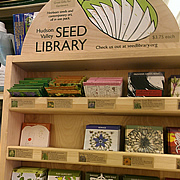
Senior Capstone Projects (2015-2016)
Clarivel Gonzales, Carolyn Lois, & Helen Mebrate (2016)
We examined how seed libraries contribute to regional crop-species diversity and provide food-system resilience against drought, disease, and other negative impacts of climate change. We surveyed seed library coordinators from around the country and measured the proliferation of regionally adapted seeds. Seed libraries have increased nearly 300% since 2013. They provide alternative sources to genetically modified seeds, enhance biodiversity and crop resilience, and reconnect people with their food source.
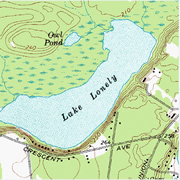 Nitrogen and sediment dynamics in wetlands and streams along an urbanization gradient
within the Lake Lonely watershed
Nitrogen and sediment dynamics in wetlands and streams along an urbanization gradient
within the Lake Lonely watershed
Ben Freiberg, Nicolas Graver, & Kat Klammer (2016)
The ability of wetlands to sequester or convert reactive nitrogen is an important control of anthropogenic nutrient inputs. We observed cool weather nitrous oxide flux, denitrification potential, nitrogen mineralization rates, and sediment patterns within two New York wetland streams. The N2O flux and N-mineralization rates had no significant relationships to temperature. The size of sediments and thus availability of denitrifying bacteria habitat may determine rates of microbial nitrate processing within wetland streams.
Full report is not available. Please contact Karen Kellogg for more information.
 Public Perception of Crude Oil Transport via Rail in Saratoga County
Public Perception of Crude Oil Transport via Rail in Saratoga County
Caroline Hobbs, Colton MacKay, Emily Mangan, & Christine Munisteri (2016)
Crude oil transport via rail has increased drastically over the past six years due to increased oil production in the Bakken Shale. Communities near rail lines experience heightened risk from its transport. We assessed public perception of risk regarding crude oil transport via rail in Saratoga County NY using surveys, semi-structured interviews, and GIS mapping. The data give us a better understanding of the general awareness of crude by rail transport and future needs of Saratoga County.
Full report is not available. Please contact Karen Kellogg for more information.
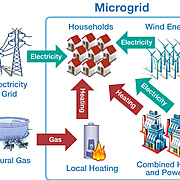 Tackling the Challenge of Smarter Energy Design
Tackling the Challenge of Smarter Energy Design
Kyle Downey, Sam Holmberg, & Michaela Kerxhalli-Kleinfield (2016)
Traditional power generation and distribution via the macrogrid is outdated, inefficient, and susceptible to outages from natural disasters. Microgrids are localized grid systems capable of producing energy using small-scale sources. We analyzed microgrid development across NY State. Functionality, reliability, and cost-effective design were more important to participating communities than environmental considerations. Obstacles include financial and technological challenges along with lack of coordination and prior experience.
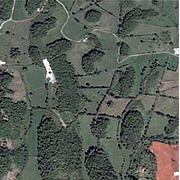 Forest fragmentation, ecosystem function, and community values within complex social
and natural landscapes
Forest fragmentation, ecosystem function, and community values within complex social
and natural landscapes
Julia Boyer, Kaelen Clark, & Grant Bean (2016)
We assessed how community perceptions and adjacent land uses affect the functioning of forest fragments and their edges. Edge effects persisted beyond 50m into the fragment. Community members of Saratoga were concerned about protecting fragments for their ecosystem services, but were unclear on who has the power to protect them. We suggest that conservation of these fragments must be considered both a natural and social landscape issue.
Full report is not available. Please contact Karen Kellogg for more information.
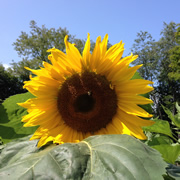 Lead-Contaminated Soils in Saratoga Springs and Hormone-Stimulated Phytoextraxtion
as a Potential Solution
Lead-Contaminated Soils in Saratoga Springs and Hormone-Stimulated Phytoextraxtion
as a Potential Solution
Charles Lovejoy & Una Semar (2016)
Lead-contaminated soils are pervasive in many urban settings. We tested lead concentrations
in home-garden soils of Saratoga Springs residents. In the lab, we analyzed the effect
of various hormone treatments on the ability of sunflowers to phytoextract lead.
We found significant lead contamination in over half of the gardens sampled. Sunflowers
treated with strigolactone had significantly elevated concentrations of lead in their
tissues compared to the other hormone treatments and control group.
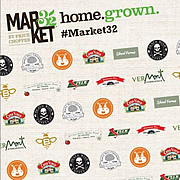 Got Local? Want Local? Consumer Marketing Analysis of Local Food
Got Local? Want Local? Consumer Marketing Analysis of Local Food
Rachel Dyckman, Olivia Gramprie, & Alyssa Hagerbrant (2016)
Local food (food grown within a region) is a growing environmental movement, and large food retailers are trying to capitalize on this trend. Retailers use food labels to capture consumer interest in local food. We evaluated local food availability in several cities within the Capital Region of New York State, and assessed how stores label and advertise local food. The majority of consumers will pay more for a local product, but availability and labeling vary widely among retailers.
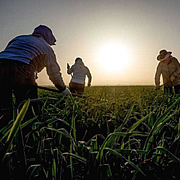 Seeking Sovereignty: Migrant Farmworker Wellbeing in the New York Capital Region
Seeking Sovereignty: Migrant Farmworker Wellbeing in the New York Capital Region
Celeste Calderon, Brian Fredericks, & Olivia McKee (2016)
The US economy has relied on migrant labor since inception, particularly in agriculture, but little research exists on migrant farm workers. We conducted 45 interviews with migrant farm workers, employers, and service providers in the Capital Region of NY State. Migrant farm workers in this region face food sovereignty barriers. They employ methods of resilience and cultural preservation through backyard/small-scale agriculture, use of local services, and connections with a growing migrant community.
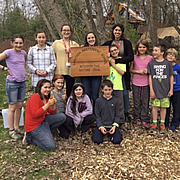 Environmental Education and Interpretive Trailblazing at Saratoga Independent School
Environmental Education and Interpretive Trailblazing at Saratoga Independent School
Katie Cuthbert, Emma Ottenheimer, & Kylie Rosabal (2016)
We worked at the Saratoga Independent School to develop an afterschool environmental
club. We constructed an interpretive nature trail on school property that included
stations, lessons, and activity suggestions for future use. Lessons focused on place-based
education, nearby nature, and experiential learning. We conducted interviews and
focus groups with students, teachers, and parents, and measured environmental knowledge,
behavior, and attitudes with a control and treatment group.
Full report is not available. Please contact Karen Kellogg for more information.
